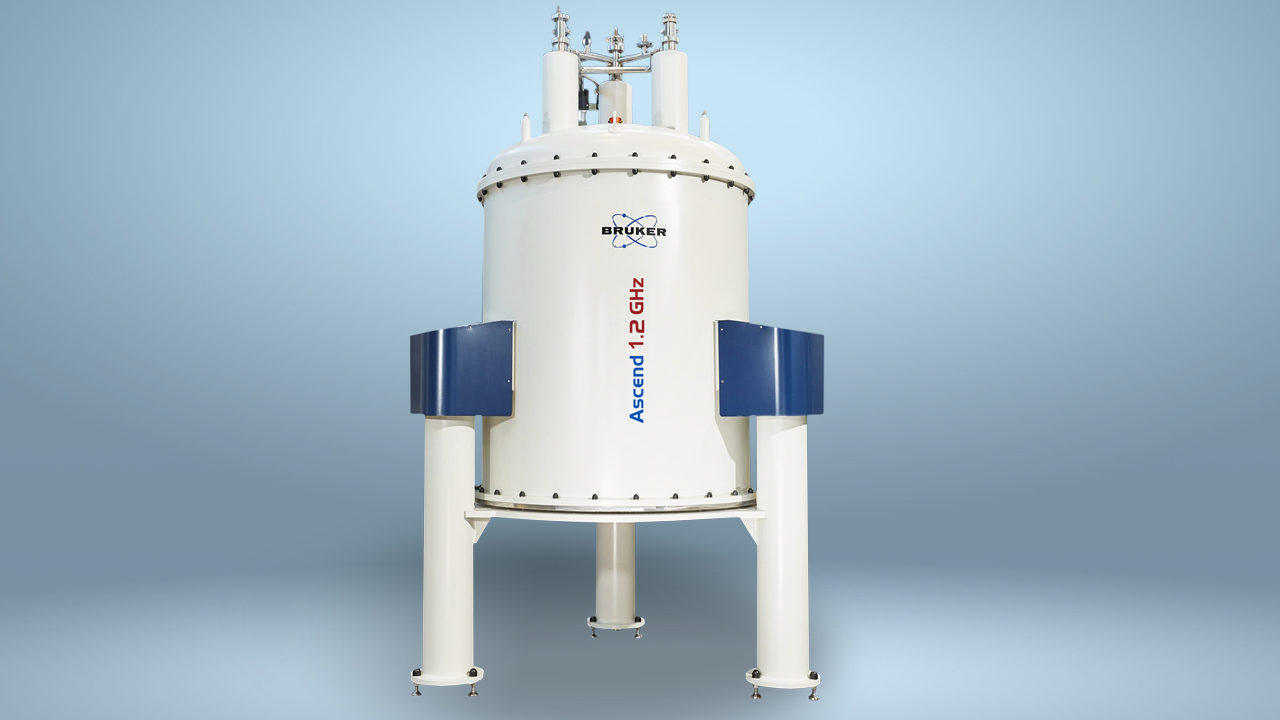Bruker GHz-Class NMR Takes Structural Biology and Micro-MRI Research of Dutch uNMR-NL Consortium to New Levels
UTRECHT, Netherlands – February 18, 2022 – The Dutch ultra-high field nuclear magnetic resonance consortium (uNMR-NL) is broadening its scientific research capabilities with a new Bruker 1.2 GHz Avance™ NMR system installed at Utrecht University.
The uNMR-NL consortium consists of research groups at Utrecht University, Wageningen University, Radboud University, Leiden University, the private-public partnership COAST and associated members at the academic medical centers in Utrecht, Amsterdam, Leiden and Nijmegen. With this advanced GHz-class NMR technology, the consortium and its national and international academic and industrial users will expand their disease research and discovery of new medicines, materials research for energy storage and conversion, and plant research for improving photosynthesis, agriculture and food quality.
In addition to utilizing the improved sensitivity and the enhanced resolution of 1.2 GHz for NMR spectroscopy, the uNMR-NL consortium is the first to use a 1.2 GHz spectrometer for micro-imaging, using specialized Bruker micro-MRI probe technology. This will allow the researchers to obtain both molecular structural information and 3D magnetic resonance images of samples.
“The installation of the new 1.2 GHz system in 2021 represents a milestone for future NMR and micro-MRI based research in analytical science and beyond,” concludes Dr. Marc Baldus, Professor at Utrecht University and Coordinator of the uNMR-NL Consortium.
With the new Avance 1.2 GHz system, researchers will now be able to study complex biomolecular systems ranging from dynamic molecular networks to membrane and cell-embedded protein machines, and the processes operating on nucleosomes within cells with unprecedented resolution. On the materials side, the new instrumentation will support the bottom-up design of emerging energy conversion technology such as bioinspired and biohybrid artificial photosynthesis for producing fuel and chemicals with light, similar to the natural processes that occur in plants.
In addition, the new GHz-class instrument will aid the study of inorganic materials such as the hybrid halide perovskites for photovoltaic applications and novel solid electrolytes for safer and more compact batteries. Furthermore, the 1.2 GHz system will be a game changer for revealing the active sites in relevant catalysts.
About Bruker Corporation
Bruker is enabling scientists to make breakthrough discoveries and develop new applications that improve the quality of human life. Bruker’s high performance scientific instruments and high value analytical and diagnostic solutions enable scientists to explore life and materials at molecular, cellular and microscopic levels. In close cooperation with our customers, Bruker is enabling innovation, improved productivity and customer success in life science molecular and cell biology research, in applied and pharma applications, in microscopy and nanoanalysis, as well as in industrial applications. Bruker offers differentiated, high-value life science and diagnostics systems and solutions in preclinical imaging, clinical phenomics research, proteomics and multiomics, spatial and single-cell biology, functional structural and condensate biology, as well as in clinical microbiology and molecular diagnostics. For more information, please visit: www.bruker.com.
Customer and Media Contact
Thorsten Thiel, Ph. D.
VP of Group Marketing
Bruker BioSpin
+49 (721) 5161–6500
pr@bruker.com
